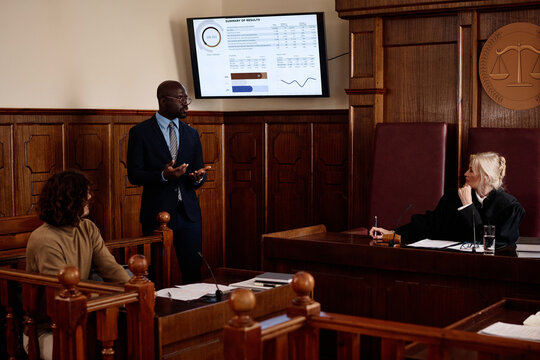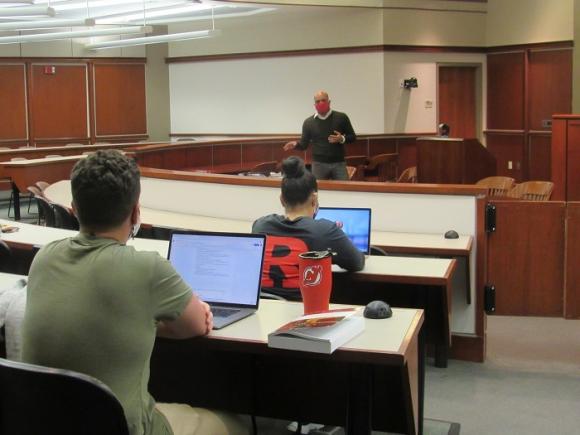Raise Your Lawful Practice with Cutting-edge Trial Presentations: Ideal Practices and Advice
Raise Your Lawful Practice with Cutting-edge Trial Presentations: Ideal Practices and Advice
Blog Article
How to Develop Engaging Test Presentations That Sway Juries and Juries
Crafting engaging test presentations that astound juries and courts is a nuanced art that requires a tactical strategy. By using cutting-edge aesthetic tools, incorporating interactive elements, and committing time to strenuous practice and practice session, lawful experts can dramatically improve the influence of their courtroom discussions.
Understanding Your Target Market
To efficiently involve your audience during trial discussions, it is essential to understand their choices, expectations, and level of competence in the topic. By tailoring your presentation to fulfill the certain demands of the audience, you can improve their understanding and retention of the details presented.
Begin by looking into the demographics of the target market, such as age, education level, and line of work. This details can aid you gauge their familiarity with lawful treatments and adjust your discussion style appropriately. A jury may call for less complex language and more aesthetic help contrasted to a team of lawful experts.
Moreover, think about the mental and emotional aspects of your target market. Are they supportive towards particular arguments or more likely towards facts and proof? Recognizing these subtleties can assist you frame your presentation in such a way that reverberates with the audience on a much deeper degree.
Storytelling Strategies
Comprehending your audience's assumptions and choices can substantially influence the efficiency of your test discussions, specifically when carrying out narration techniques to astound and persuade. Storytelling is an effective tool that can assist legal representatives get in touch with judges and courts on a more emotional level, making complicated legal disagreements much more unforgettable and relatable.

Incorporating vibrant details, personal stories, and rhetorical devices can better boost the narration experience, keeping the audience involved and spent in the end result of the instance. By crafting a persuasive tale that reverberates with the worths and feelings of the jury and judges, legal representatives can boost the possibilities of winning their arguments and attaining positive judgments.
Visual Presentation Devices
Utilizing aesthetic discussion tools can significantly enhance the influence and efficiency of trial presentations by providing an aesthetically engaging way to share complex info to judges and courts. Aesthetic aids such as graphes, charts, layouts, and animations can aid simplify complex information, making them more easy to understand and obtainable to the target market. By including aesthetic components into trial presentations, lawyers can create a compelling narrative that resonates with jurors and leaves a long lasting perception.

Incorporating Interactive Aspects
Including interactive components right into trial presentations can enhance audience engagement and comprehension, promoting a more interactive and immersive court room experience. By incorporating components such as interactive timelines, 3D animations, clickable exhibitions, and online reality restorations, lawyers can captivate courts and jurors, making complex info more obtainable and unforgettable.
Interactive timelines enable a dynamic display screen of sequential events, assisting the audience understand the sequence of crucial events in a situation. 3D animations can bring criminal offense scenes or accident restorations to life, using a comprehensive visual depiction that aids in clarifying intricate details. Clickable exhibits make it possible for customers to communicate with evidence, records, or photos, enabling a hands-on exploration of critical info.
In addition, online truth repairs can transport the target market into visit our website the heart of the activity, supplying a compelling viewpoint that standard discussions may do not have. These interactive components not just engage the visitors however also encourage them to proactively take part in the trial process, causing a more impactful and influential courtroom discussion.
Technique and Practice Session
To effectively utilize the potential of interactive elements in trial discussions, comprehensive practice and practice session are vital to guarantee smooth assimilation and distribution in the court setup. Technique and practice session help trial presenters become acquainted with the content, timing, and circulation of their discussions, permitting them to with confidence browse with various aspects such as videos, computer animations, or interactive graphics. By rehearsing their distribution, speakers can improve their speaking skills, body language, and overall presentation Extra resources design to boost persuasion and reputation before the jury and court.
Throughout practice, speakers can determine any kind of technical issues that might develop with interactive aspects, making sure that everything runs efficiently throughout the real test. Additionally, rehearsing in front of a mock audience or associates can offer important feedback on the efficiency of the interactive components and the total presentation. This responses permits speakers to make necessary modifications and renovations prior to tipping right into the courtroom, eventually raising the effect and success of their trial discussions.
Conclusion
In final thought, creating engaging test discussions that astound judges and courts needs a deep understanding of the audience, effective storytelling methods, aesthetic devices, interactive elements, and detailed technique (Trial Presentations). By executing these techniques, lawful professionals can properly share their debates and evidence in an engaging fashion that reverberates with the decision-makers in the court room
Using visual discussion devices can greatly improve the influence and effectiveness of test discussions by providing a visually engaging means to communicate complicated info to juries and judges. By integrating aesthetic components into test presentations, attorneys can produce a compelling narrative that reverberates with jurors and leaves a lasting impression.
One popular aesthetic presentation tool visit this page is the use of multimedia discussions, which allow for the integration of videos, photographs, and audio recordings to supplement verbal debates. Trial Presentations.To successfully take advantage of the capacity of interactive elements in test discussions, complete method and practice session are important to make certain smooth combination and shipment in the court room setting. Method and rehearsal help trial presenters come to be familiar with the web content, timing, and flow of their presentations, permitting them to confidently browse via various components such as video clips, animations, or interactive graphics
Report this page